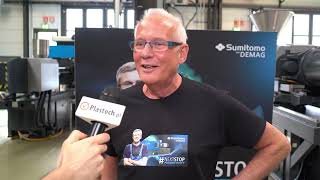Acrylics
Acrylic adhesives offer a broad adhesion capability. They are able to bond a wide range of varied substrates, including most thermoplastics, and exhibit a good balance between high strength and some flexibility, which makes them one of the most frequent choices when dynamic loads are involved. Another interesting feature of this chemical family is their fast cure speed, which brings additional cost-saving opportunities in the manufacturing process. However, they usually smell and, therefore, when a large adhesive amount is involved it is recommended to apply it in well ventilated areas.
Acrylic adhesives can be either a one-part adhesive with an activator or a two-part adhesive system. The one-component adhesives do not require any mixing. The adhesive is applied to one substrate, the activator to the other, and the curing process only starts when the two surfaces are brought together. In two-part systems, the activator and the adhesive are mixed together using a mixing nozzle and then applied to one surface.
Silicones
In contrast to the adhesive systems described above, all of which are based on organic chemistries, silicone adhesives have an inorganic backbone. Unlike their organic counterparts, silicones remain highly elastic even at temperatures as low as minus 90 degrees Celsius. They are also able to withstand continuous service temperatures of up to 200 degrees Celsius and are exceptionally resistant to UV radiation. Applications where they can be employed as adhesives are in areas where there is a need for high flexibility and high-temperature performance capability. In addition, they show good resistance to aggressive chemical substances and excellent resistance to moisture and weathering.
Silicone adhesives are available as one-part or two-part systems. The range of applications served by one-part silicones stretches from assembly of clothes irons to vehicle manufacturing, and electrical engineering to special tasks in the aerospace industry. Two-part silicones are used in the electrical industry, household appliance manufacturing, and in the vehicle industry. They are particularly useful where atmospheric moisture levels are too low to permit completion of the curing process of one-part silicones or where an acceleration of the production process is desired.
Silane modified polymers
Silane modified polymer adhesives, often referred to as MS polymers, show very good adhesion to many different substrates. The bonds have a continuous thermal resistance of approximately 80 to 100 degrees Celsius, high elasticity (resulting in good resistance to deformation even at low temperatures), and are highly resistant to UV radiation and weathering.
Adhesives based on MS polymers are used to bond parts in rail, car and container construction, in equipment and apparatus assembly, metal and sheet metal processing, solar engineering, façade and window installation, air conditioning and ventilation systems, cleanroom equipment, and in a series of building and construction applications. The advantage of this adhesive category is that it is free of silicone oils and therefore presents no incompatibilities during downstream painting of bonded parts.

Lalian |
sent: 2012-11-03 07:26:50
They can be used to bond almost all materials commonly employed in industrial manufacturing. One essential aspect is selecting the right bonding solution for each particular construction. [url=http://www.westendpackers.com/]Industrial packing visakhapatnam[/url] |


